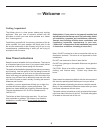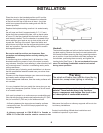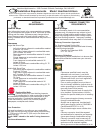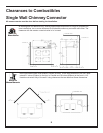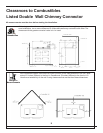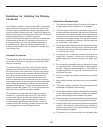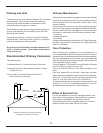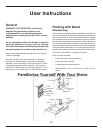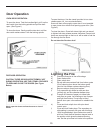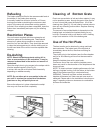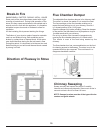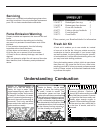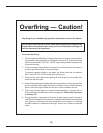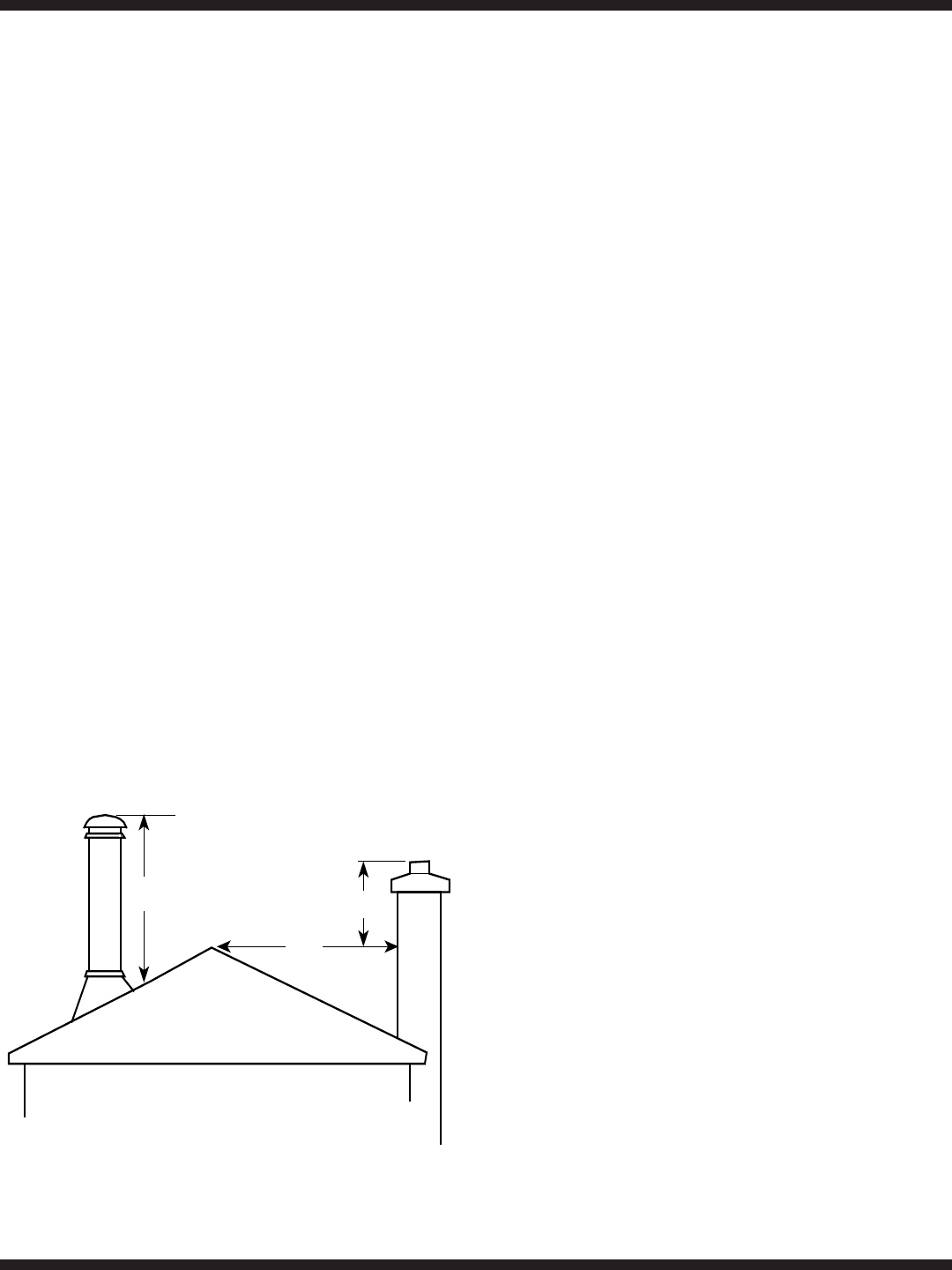
11
.
Effect of Extractor Fan
It is not permissable to use an air extraction device in the
same room as this appliance, unless additional ventilation
is provided to compensate the equivalent capacity.
Anything that may cause a negative pressure can cause
gases or fumes to be pulled into the living area.
Chimney and draft
The chimney is the most important element of a successful
stove operation. The chimney 'drives' the system by
producing the draft that draws in combustion air and
exhausts smoke and gases to outdoors.
When installing a new stove or upgrading an existing one,
give as much attention to the chimney as you do to the
appliance that it serves.
A glowing red hot stove or chimney connector indicates
excessive draft. The stoves failure to get hot, or long burn
times may indicate poor draft conditions.
Good draft in a cold chimney should be between 0.01"
and 0.1" of water column. ( your dealer may be able to
check this for you.
Recommended Chimney Clearances
The chimney must:
1) extend at least 14 ft. above the collar of the stove.
2) extend at least 3 ft. above the point where it passes
through the roof.
3) be at least 2 ft. above anything within a 10 ft.
radius of the top of the pipe.
Illustration showing minimum heights required,
depending on the locaton of chimney
24"
(600mm)
10'
(3 metres)
36"
(900 mm)
Floor Protection
When installing your woodstove on a combustible oor, a
non-combustible oor protector is required under the stove to
protect the oor from hot embers that may fall when reloading.
The oor pad must be a continuous, non combustible pad
(oor tile with grouting or sheet metal pad).A oor pad should
not be placed on top of a carpet.
Pad must extend 21"(534mm) in front of the stove in Canada
and 18" (458mm) in front of stove in US.
Pad must extend 8"(203mm) to the sides and back of the
stove.
Pad must extend fully to the wall if using side and back
Chimney Maintanence
Chimneys serving woodburning appliances must be checked
regularly for creosote build-up.Until you are familiar with the
rate of creosote build-up in the system, check it often - every
couple of weeks.
Creosote may be in the form of dry, aky deposits clinging to
the liner of a shiny, glazed coating that resembles black paint.
Glazed creosote is the most dangerous kind and indicates
that one or a combination of the following conditions exist.
1) cold liner
2) smouldering res
3) wet wood
Glazed creosote should never exceed 1/8" (3mm) thickness.
Dry aky cresote should never exceed 1/4" (6mm) thickness
before it is removed.
Pad extension must be fabricated from non-combustible ma-
terials: 1/2” (13 mm) thick minimum with thermal conductivity
factor “K” of 0.43 or lower (units of K = btu/ft/h/F/in).
To determine thickness of equivalent material required use
formula: (“K” x 0.5) / 0.43 = thickness required (“K” value can
be obtained from manufacturer of oor material).





